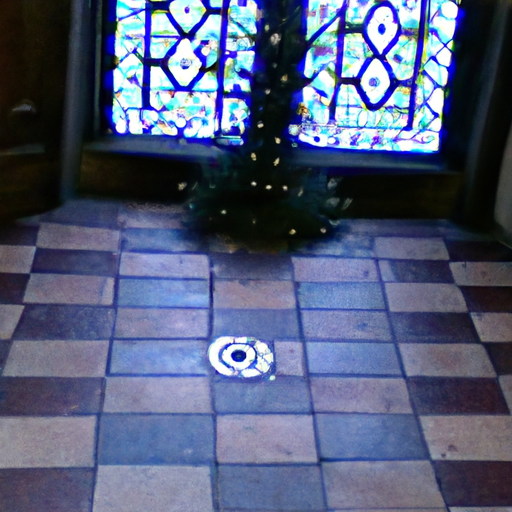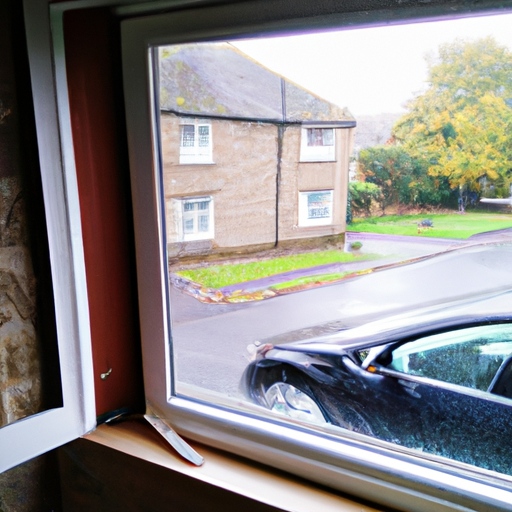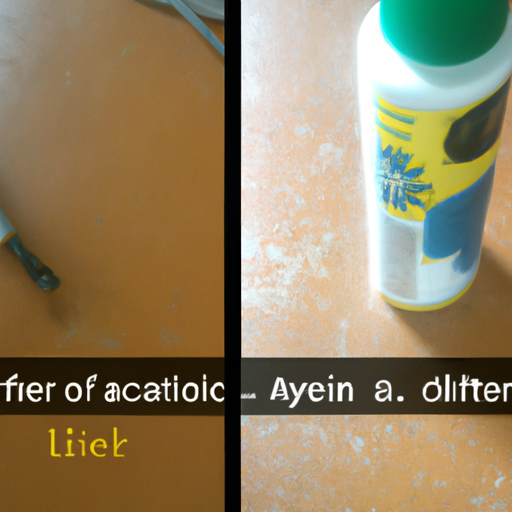
Case Study: Seasonal Prep for Yeovil Church Windows in Somerset
Do you ever think about how a parish church in Yeovil, tucked between the South West’s rolling hills and the damp Somerset air, steels itself against the seasons? I do, because I clean windows for a living and because our churches aren’t just pretty faces on a Sunday morning—they’re active community spaces that take a beating from rain, frost, leaves, and the odd squally wind off the Mendips. Here’s a real-world case study from a historic Yeovil church, right in the middle of town near the Market Place and the old Market House, where the weather and the crowds both leave their marks. If you’re reading this as a PCC member, a churchwarden, or a fellow tradesperson nearby in Sherborne, Crewkerne, Ilminster, Martock or Somerton, there’s plenty in here you can adapt to your own building.
Why seasonal prep matters for Yeovil church windows (keywords: seasonal maintenance, historic windows, weather impact)
As I tell parish stewards around Yeovil, the windows are part of the fabric—literally. In Somerset we swing from damp autumns to frosty winters and back into gentler springs. That cycle isn’t kind to old glazing, putty, and wooden frames. Seasonal prep helps avoid chipping paint, warped sashes, or brittle leaded lights, and it reduces unexpected disruption to services.
During autumn, leaves and rain combine to drive runoff and staining. In winter, frost and condensation can sit on sills and mullions, and in spring we contend with pollen and bird droppings that have built up over the quieter months. All of this means a planned window care schedule is not a luxury—it’s part of safeguarding the building and ensuring good lighting for sermons, choirs, and community events.
I’ve seen parish windows in Yeovil face multiple challenges at once: damp stonework around the sills, old putty that’s gone a bit crumbly, and metal fixtures that show signs of corrosion. The good news is that with a well-structured plan, you can keep them looking bright and functioning as designed, even through Somerset’s wet and windy days.
If you want a gist of the practical side, you’ll find similar ideas in our broader Yeovil window care resources, like the general window cleaning guide and the case studies on access and maintenance linked in this post. For broader context, our blog hub is a handy place to explore related topics: the blog page.
The planning stage: risk assessment, permissions, and parish coordination (HSE-compliant)
Before touching a single pane, we start with a formal plan. For a church, that often means:
- A risk assessment tailored to a historic, potentially listed building. In the UK, that aligns with the Health and Safety at Work Act and associated guidance on working at height and fragile glazing. We document fall protection, weather windows, and methods that protect the fabric of the building.
- Consultation with the PCC (Parochial Church Council) and, if needed, the diocese. Historic or listed structures may require permission for specific cleaning methods and materials.
- A site-specific method statement. This covers access (rope access vs. lift vs. ladders), cleaning agents, and a plan for protecting leaded-light panels and painted frames.
- Weather contingency planning. Somerset winters can surprise you; we build in buffer days and plan for roof wash-off and drainage considerations so we don’t flood plaster or transport soiled water into the nave.
In Yeovil, churches often sit in the heart of the town centre—think Market Place corridors and the approach toward the old town lanes. That means coordinating around services, weddings, and harvest festivals. If you’re planning ahead, start your risk assessment well before autumn storms arrive. And if you’re unsure about special permissions, it’s worth a quick chat with the local authorities and the Diocesan Advisory Committee (if listed status applies).
For extra perspective on how we handle access challenges for churches and other sensitive buildings, you might like to read our case study on church access solutions: Case Study: Solving a Church Window Access Challenge in Yeovil and Maintaining Yeovil Church Windows Safely.
The seasonal prep plan: actions by season (autumn, winter, spring)
Here’s how we break the year down for Yeovil church windows. It’s a practical framework you can adapt for nearby towns like Sherborne, Crewkerne, Ilminster, Martock, and Somerton as well.
Autumn: setting up for autumn leaves and damp days
- Clean exterior glazing to remove rain-splashed dirt and pollen buildup that can glaze into stonework over winter. We use safe, non-abrasive methods on historic glass.
- Clear roofline debris along with sills to prevent blocked drainage that could cause moisture ingress.
- Inspect putty joints and lead cames. If you spot minor cracks or loose putty, mark them for the church’s joiner or glazier—preventing bigger problems when damp returns.
- Apply anti-stain or water-repellent coatings where appropriate, but only after discussing with the PCC, ensuring compatibility with historic materials.
- Schedule a preliminary condensation check for interior glazing near the altar and choir stalls, especially in older timber-framed sections.
This is the time when a lot of our Yeovil clients want to schedule a church window clean ahead of Remembrance Sunday and harvest services. It’s a good habit to shoo in a tidy-up before the peak autumn footfall begins around town landmarks like Market Place and the vicinity of The Octagon Theatre, which draws people in for events and performances.
Winter: frost, condensation, and careful handling
- Prioritise interior condensation control and ventilation. In older buildings, that damp air can condense on the cold glass and frames, leading to long-term staining if ignored.
- Use demineralised water systems on exterior glass (where feasible) to reduce water spots, especially on classic leadlight panes.
- Check for frost-related damage on timber frames and metal fixings. Frozen water expands and can pop joints or crack paint; we plan timely touch-ups and protective coatings.
- Keep to safe access methods. In Yeovil’s streets, ladders alone can be risky on uneven stone steps, so we evaluate access options with care and document them in the job file.
- Plan post-winter inspection dates. After heavy frosts or sustained wet weather, a follow-up inspection helps catch issues early, especially around historic windows that have aged putty and ironmongery.
Winter in Somerset isn’t just about the cold—it’s about the damp that follows. If the church has a bell tower or a spire with weathering, we’ll coordinate with the church’s maintenance team to ensure access routes and snag points are clear and safe.
Spring: pollen, birds, and brighter light
- Inspect for pollen deposits and bird droppings that have built up over winter. A careful interior and exterior clean helps restore clarity and enhances natural light for Easter services.
- Re-check the condition of any protective coatings and reapply if needed after a winter of dampness.
- Schedule a deeper façade assessment for any sections that view wind-driven rain or splashback from nearby roofs.
- Review the cleaning schedule with the PCC to ensure a sustainable cadence that supports ongoing use of the church.
If you’re planning around a country show weekend or a big town event, like Yeovil’s autumn markets or a local concert series at The Octagon, you’ll want to keep windows clean for the crowds and for the photos afterwards—people do notice neat windows.
The safety-first approach: equipment, access, and UK health and safety regs (HSE-compliant)
In Yeovil, historic churches demand a careful balance of effectiveness and preservation. Our safety approach aligns with UK health and safety regulations, with a focus on:
- Working at height: using appropriate access equipment, fall-protection where required, and trained staff who understand rope access versus mechanical lifts. For a better sense of options, see our discussion on Rope Access vs Cherry Picker in Yeovil: Rope Access vs Cherry Picker: Best for Yeovil Properties.
- Fragile glazing and historic materials: avoiding abrasion on leaded glass and painted frames, using soft cloths, and testing cleaning solutions on inconspicuous patches first.
- PPE and chemical safety: wearing gloves, eye protection, and ensuring any cleaning agents are safe for historic materials and do not degrade seals or putty.
- Ladders and access routes: ensuring stable footing on stone or flagged surfaces and avoiding disruption to worship services.
- Documentation: keeping a clear job sheet for permissions, methods used, and aftercare instructions for the church’s maintenance team.
If you’re curious about the safety and practicalities of professional window work in Yeovil, we cover a lot of this in our safety-focused posts and case studies. For example, see our page on staying safe during window cleaning and the broader health and safety guidance in our Yeovil blog series.
For reference, we often link back to our general Yeovil window cleaning resources: window cleaning services in Yeovil and the blog page.
The actual work in Yeovil: a two-day church window clean narrative
We recently worked with a small parish church near Yeovil town centre. The nave windows looked fine from a distance, but a closer look revealed decades of damp stains, pollen deposits, and several spots where old putty had become brittle.
Day 1 started with a careful exterior survey from ground level and, where necessary, rope access to reach higher frames around the nave and chancel. We used demineralised water and non-abrasive cloths to lift surface grime without scratching glass or removing historic patina. For leaded lights, we avoided aggressive scrubbing and instead used gentle brushes and a mild solvent-free cleaner when allowed by the PCC.
Inside, the focus was condensation control and interior glass clarity. We assisted with a light wipe-down of sills, followed by a controlled ventilation plan to reduce damp buildup after a busy Sunday. In one panel group—where the glass has a slight waver due to aging—we applied minimal anti-mist measures that won’t adversely affect the historic appearance.
Day 2 involved final detailing and a more thorough assessment of the window frames, sills, and iron fixings. We noted several joints that would benefit from re-pointing or re-sealing in the coming months, and we prepared a maintenance plan that aligns with the church calendar. The PCC appreciated how we explained the work in plain terms and left behind clear aftercare notes for their volunteer caretakers.
This is where the local detail matters. Yeovil’s streets aren’t just corridors of commerce; they’re corridors of daily life and small church gatherings. When we plan a Church window clean, we factor in the schedule of services, any outreach events and nearby happenings at venues like The Octagon Theatre or Yeovil Library. It’s all part of keeping the building welcoming and fit for purpose without interrupting worship.
If you want a concrete example of access challenges and how we solve them, you can read more about the church access case study in Yeovil here: Case Study: Solving a Church Window Access Challenge in Yeovil.
Key challenges and how we mitigate them (leaded lights, frost damage, birds)
- Leaded glass and old putty: Leaded lights are beautiful but delicate. Cleaning must be done with care to avoid loosening cames or bending lead strips. We use soft brushes and tested solutions, and we avoid anything abrasive.
- Frost and condensation: Interiors can fog up during damp weather. We recommend a controlled ventilation approach and, where appropriate, a mild, approved anti-condensation treatment that won’t react with historic materials.
- Bird droppings and staining: Bird deposits can stain and etch if left untreated. We schedule exterior cleans after peak roosting periods and use gentle methods to remove residues without scratching the glass.
- Accessibility: Yeovil’s historic churches aren’t always friendly to ladders on uneven surfaces. Rope access and compact lifts, handled by trained technicians, often provide safer, more stable access for fragile panes.
These are the kinds of everyday decisions we face in Yeovil, and they’re exactly why a good plan, local know-how, and careful execution matter.
For readers curious about access strategies in more detail, we link to our relevant case study focused on church window access, which has proven especially relevant for other historic buildings in Somerset: Case Study: Solving a Church Window Access Challenge in Yeovil.
Results, impact, and the ongoing maintenance plan (costs, scheduling, and value)
- Appearance: The exterior glass is visibly brighter, with far less staining and mineral deposits. Interiors show improved daylight without glare, especially important for photography and community events held in the nave.
- Preservation: The careful approach preserves historic materials and minimizes risk to putty joints and lead came. This reduces long-term restoration costs by catching issues early.
- Safety and compliance: All work was carried out under a formal risk assessment, with clear documentation for the church’s records and the diocese as needed.
- Maintenance cadence: We recommend two major cleans per year as a baseline for a medieval or early modern parish church in the Yeovil area, with quarterly inspections to check for cracks in putty, rust on iron fixings, or weathering that could lead to moisture ingress.
- Costs and timing: For a small to medium Yeovil church, a two-person team typically spends one to two days on exterior and interior work, followed by a short maintenance visit. Costs vary with access needs and the scope, but the value is in preventing bigger repairs later. If you’re budgeting, think of it as a balance between a reasonable annual outlay and avoided repair bills over the decades.
When you’re managing a church budget, it helps to see window maintenance as part of a broader building care plan—similar to how you’d schedule heating system servicing or roof checks. And if you want to see how other local churches in Somerset handle maintenance, our Yeovil blog collection includes several relevant pieces and case studies you can browse: blog.
Local flavour and nearby areas: integrating Yeovil’s community network
Yeovil isn’t just a standalone town; it’s part of a wider Somerset community that includes places like Sherborne, Crewkerne, Ilminster, Martock, and Somerton. It’s not unusual for a church in Yeovil to host shared services or joint social events with nearby villages, which means our maintenance plan often coordinates with those schedules too. And because local weather patterns don’t respect parish boundaries, the same seasonal approach works well in many surrounding churches.
For a broader read on how seasonal maintenance interacts with other local contexts, you might explore topics like “Preparing Windows for Winter in Yeovil” and “Autumn Leaves Removal in Yeovil Windows,” which connect to practical seasonal checks and planning in Somerset. See related posts in our broader blog library, including the autumn and winter safety check roundups.
If you’re planning a visit or a service near the town centre, you’ll likely pass by The Octagon Theatre and Market Place area—two anchors of Yeovil life that bring congregations and audiences together. A clean, bright church windows set the right tone for welcoming visitors in, whether they’ve come to a service or a local concert.
Practical takeaways for PCCs and church caretakers
- Start with a proper risk assessment and engage your diocese early if you have listed-building considerations.
- Build a simple annual plan that covers autumn prep, winter checks, and spring cleaning, with a mid-year inspection to catch any issues from the worst weather.
- Use a conservative, preservation-focused cleaning approach for historic materials, and never rush a clean around glazing that’s fragile or has aged putty.
- Keep clear records: dates, methods used, any risks observed, weather conditions, and next maintenance window. This helps with future budgeting and planning, and it’s appreciated by volunteers who take care of the church.
- Coordinate with local suppliers and window cleaners who understand the region’s climate and historic buildings. Click through to our main service page to learn more about our Yeovil offerings: window cleaning services in Yeovil.
For more on church-specific case studies and safer cleaning practices, check out our related posts about church window access and maintenance in Yeovil:
- Case Study: Solving a Church Window Access Challenge in Yeovil
- Maintaining Yeovil Church Windows Safely
And if you want to explore broader topics or find more inspiration for your own church, our hub page is a good starting point: blog.
##FAQ
- How often should Yeovil church windows be cleaned? – Most historic churches benefit from a thorough exterior and interior clean annually, with a lighter maintenance sweep mid-year. Larger services or higher footfall may justify more frequent checks.
- Are there safer cleaning methods for leaded glass? – Yes. We avoid abrasive tools and harsh chemicals, focusing on gentle brushing, soft cloths, and compatible cleaners approved by PCCs or diocesan guidelines.
- Do you need permissions for cleaning a listed church? – Often yes. It’s best to consult the PCC and the Diocese if needed; we can help navigate permissions and ensure the chosen methods comply with conservation requirements.
- What about access for high windows? – Rope access or compact lifts are common in Yeovil churches to minimise risk and protect historic fabric. We always assess the safest option for each building.
- Can cleaning improve energy efficiency or lighting? – While cleaning improves clarity, the main gains are better daylighting and preserving the glass and frames, which helps long-term preservation and service comfort.
If you’d like to discuss a seasonal plan for your church’s windows, give us a call or drop a line. We’re well-placed to serve Yeovil and the wider Somerset area, with familiarity of local weather patterns and historic building care. You can reach us through the homepage or by visiting our blog for related tips and case studies.
CTA: Ready to start your seasonal window care plan? Contact us for a no-obligation site survey and a tailored maintenance schedule that fits your parish calendar. And if you’re exploring other local topics, our internal links to the blog and related posts will help you navigate the best practices for Yeovil and Somerset churches.
Why Choose Professional Window Cleaning in Yeovil, Somerset?
If you're looking for reliable window cleaning services in Yeovil, Somerset, we're here to help. Our experienced team provides professional window cleaning for homes and businesses throughout Somerset.
Ready to get sparkling clean windows? Contact us today for a free quote!
Related Articles
- Case Study: Maintaining Yeovil Church Windows Safely
- How Often Should You Clean Windows in Somerset Homes: A Yeovil Guide
- Post-Storm Window Cleaning: Safe Yeovil Windows in Somerset
This article was written by Yeovil Window Cleaning Services, your local window cleaning experts serving Yeovil, Somerset and surrounding areas in Somerset.
Last updated: 12 October 2025
Need Professional Window Cleaning in Yeovil?
Get crystal clear windows with our professional cleaning service. We serve residential and commercial properties throughout Yeovil and surrounding areas.
Get a Free QuoteRelated Articles

More Soap Means Cleaner Windows? Yeovil, Somerset Myth Debunked
A neighbourhood chat with a window cleaner about the old belief that more soap equals cleaner windows. In Yeovil, Somerset, the truth is a bit more nuanced—and safer too.

November Back-to-School Window Care for Yeovil Flats
A neighbourly, practical guide to keeping windows in Yeovil flats sparkling through November. Local tips, safety-minded steps, and a seasonal plan for Somerset weather.

The Best Annual Window Cleaning Tips for Yeovil Homes
Ever wondered how to keep Yeovil windows sparkling year-round without the hassle? This neighbourly guide blends local weather, safety, and practical tips for Somerset homes.
